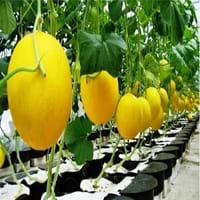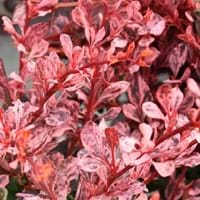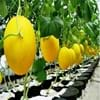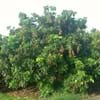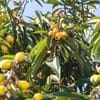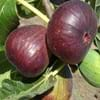Life Span
Annual or Biennial
Perennial
Origin
Africa
Eastern Asia, Japan
Types
Earlibrew, Honey King, Moonshine, Brilliance,Honey Chow
Not Available
Number of Varieties
Not Available
Habitat
Semi arid regions
Old fields, stream banks
USDA Hardiness Zone
Not Available
4-8
Sunset Zone
2a, 2b, 3a, 3b, 4, 5, 6, 7, 8, 9, 10, 11, 12, 13, 14, 15, 16, 17, 18, 19, 20, 21, 22, 23, 24
A3, 2b, 3a, 3b, 4, 5, 6, 7, 8, 9, 10, 11, 12, 13, 14, 15, 16, 17, 18, 19, 20, 21, 22, 23, 24
Habit
Vining/Climbing
Oval or Rounded
Flower Color
Yellow
Yellow, Yellow green
Flower Color Modifier
Bicolor
Not Available
Fruit Color
White, Yellow, Salmon
Red orange
Leaf Color in Spring
Green
Light Green
Leaf Color in Summer
Dark Green
Green
Leaf Color in Fall
Dark Green
Purple, Orange, Burgundy, Crimson
Leaf Color in Winter
Light Green
Not Available
Leaf Shape
Heart-shaped
Obovate
Plant Season
Summer, Fall
Spring, Summer, Fall, Winter
Sunlight
Full Sun
Full Sun, Partial Sun
Type of Soil
Loam
Clay, Loam, Sand
The pH of Soil
Neutral
Acidic, Neutral, Alkaline
Soil Drainage
Well drained
Average
Bloom Time
Indeterminate
Spring, Late Spring
Tolerances
Drought
Pollution, Drought, Salt, Soil Compaction
Where to Plant?
Container, Ground
Ground, Pot
How to Plant?
Seedlings
Seedlings
Plant Maintenance
Medium
Medium
Watering Requirements
Reduce watering once fruit are growing, Requires a lot of watering, Requires consistently moist soil
Requires regular watering during dry weather
In Summer
Lots of watering
Lots of watering
In Spring
Moderate
Moderate
In Winter
Average Water
Average Water
Soil pH
Neutral
Acidic, Neutral, Alkaline
Soil Type
Loam
Clay, Loam, Sand
Soil Drainage Capacity
Well drained
Average
Sun Exposure
Full Sun
Full Sun, Partial Sun
Pruning
Remove damaged leaves, Remove dead branches, Remove dead leaves
Remove damaged leaves, Remove dead branches, Remove dead leaves
Fertilizers
All-Purpose Liquid Fertilizer
All-Purpose Liquid Fertilizer
Pests and Diseases
Anthracnose, Aphids, Bacterial fruit blotch, Cucumber beetles, Downy mildew, Southern Bacterial Wilt, Spider mites
Red blotch, Sunken patches
Plant Tolerance
Drought
Drought
Flowers
Showy
Insignificant
Flower Petal Number
Single
Single
Foliage Texture
Coarse
Medium
Foliage Sheen
Matte
Matte
Attracts
Not Available
Birds
Allergy
breathing problems, Cough, cramps, Diarrhea, Itchy eyes, Mouth itching, Nasal Congestion, Throat itching, wheezing
Not Available
Aesthetic Uses
Not Used For Aesthetic Purpose
Borders
Beauty Benefits
Not Available
Not Available
Environmental Uses
Air purification
Air purification
Medicinal Uses
Potassium, Vitamin C
Anthelmintic, Antibacterial, Antiseptic, Cancer
Part of Plant Used
Fruits, Leaves, Root, Seeds
Fruits, Leaves
Other Uses
Added to salads, Used in tea, wine and sweet dishes, Used to flavour soups
Used to make yellow dye
Used As Indoor Plant
No
No
Used As Outdoor Plant
Yes
Yes
Garden Design
Edible, Fruit / Fruit Tree, Herb / Vegetable, Vine
Edging, Foundation, Hedges, Mixed Border, Rock Garden, Wall
Botanical Name
CUCUMIS melo 'Honey I Dew'
BERBERIS thunbergii
Common Name
Honey I Dew Honeydew, Honeydew
Japanese Barberry
In Hindi
खरबूज़ा [kharabooza]
Japanese Barberry
In German
Honigtau
Thunberg-Berberitze
In French
Miellat
Berberis thunbergii
In Spanish
Gotas de miel
Berberis thunbergii
In Greek
πεπόνι μελιτώματος [pepóni melitómatos]
Japanese Barberry
In Portuguese
melão de Honeydew
Japanese Barberry
In Polish
melon spadzi
Berberys Thunberga
In Latin
honeydew
Japanese Barberry
Phylum
Magnoliophyta
Magnoliophyta
Class
Magnoliopsida
Magnoliopsida
Order
Cucurbitales
Ranunculales
Family
Cucurbitaceae
Berberidaceae
Clade
Not Available
Angiosperms, Eudicots
Tribe
Not Available
Not Available
Subfamily
Not Available
Not Available
Number of Species
Not Available
Not Available
Importance of Honeydew and Rose Glow Barberry
Want to have the most appropriate plant for your garden? You might want to know the importance of Honeydew and Rose Glow Barberry. Basically, these two plants vary in many aspects. Compare Honeydew and Rose Glow Barberry as they differ in many characteristics such as their life, care, benefits, facts, etc. Every gardener must at least have the slightest clue about the plants he wants to plant in his garden. Compare their benefits, which differ in many ways like facts and uses. The medicinal use of Honeydew is Potassium and Vitamin C whereas of Rose Glow Barberry is Anthelmintic, Antibacterial, Antiseptic and Cancer. Honeydew has beauty benefits as follows: Not Available while Rose Glow Barberry has beauty benefits as follows: Not Available.
Compare Facts of Honeydew vs Rose Glow Barberry
How to choose the best garden plant for your garden depending upon its facts? Here garden plant comparison will help you to solve this query. Compare the facts of Honeydew vs Rose Glow Barberry and know which one to choose. As garden plants have benefits and other uses, allergy is also a major drawback of plants for some people. Allergic reactions of Honeydew are breathing problems, Cough, cramps, Diarrhea, Itchy eyes, Mouth itching, Nasal Congestion, Throat itching and wheezing whereas of Rose Glow Barberry have Not Available respectively. Having a fruit bearing plant in your garden can be a plus point of your garden. Honeydew has showy fruits and Rose Glow Barberry has showy fruits. Also Honeydew is not flowering and Rose Glow Barberry is not flowering . You can compare Honeydew and Rose Glow Barberry facts and facts of other plants too.
